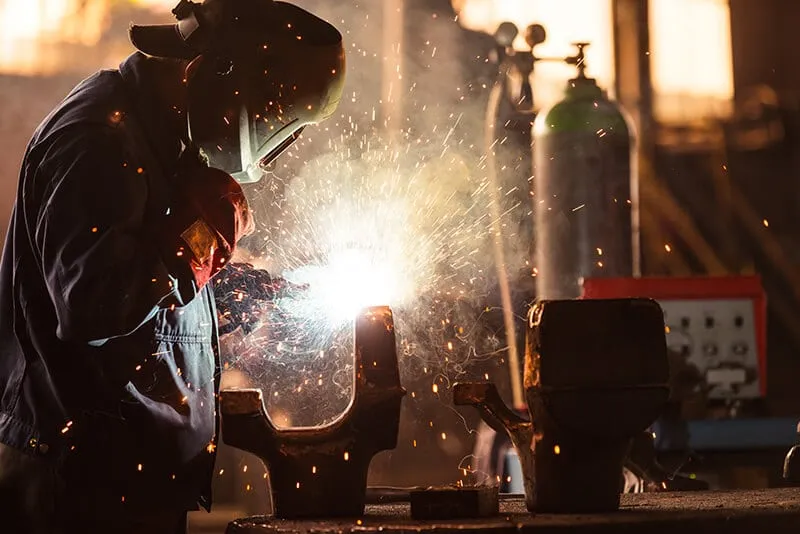Welding fume can be described as a complex blend of fluorides, silicates, and metallic oxides. These fumes are generated when metal is heated well above its boiling point and the vapors condense to extremely fine solid particles. Welding fume normally contain elements from electrodes, the base material that is being welded, and any coating present on the base metal.
Gases that might be present during the welding and cutting process are as follows:
- Ozone (O3)
- Nitrous Oxide (N2O)
- Nitrogen Dioxide (NO2)
- Shielding Gas (for instance Helium, Carbon Dioxide, and Argon)
- Carbon Monoxide (CO)
- Carbon Dioxide (CO2)
Visible fume clouds are mainly metal particles, metal fluxes, and metal oxide. Metals and chemicals which might be present during the welding and cutting process are as follows:
- Iron Oxide
- Beryllium
- Cadmium
- Copper
- Lead
- Nickel
- Chromium (III, VI)
The level of risk from the fumes is dependent on three major factors:
- How lethal the fumes are
- How long do you breathe in the fume
- The concentration level of the fume
How lethal is the fume?
Visible welding fume usually come from the filler wires when they are exposed to the electric arcs. The adequate amount of toxic substances which should be added to the filler wire should be done exactly according to the product information provided on the original packaging. Various common metals utilized in filler wires are extremely harmful and many of them have Permissible Exposure Limits (PEL) applied to them.
What is the fume concentration level?
The concentration level of harmful fumes is the highest in the fume plume which arises from the welding point. As the fume plume rises, they mix and dilute with the air present in the space. If you feel there is a lack of clean air, you can use ventilation to forcibly dilute the fumes. The more air present for the fumes to mix in, the lower the concentration level of toxic fumes. When you reduce the concentration levels of the fumes, you also reduce the risk to the welders and surrounding employees within the workspace. This is the reason why welders should keep their heads out of the fume plume.
How long should you breathe in the fumes?
Numerous welders, particularly fabricators, invest a considerable amount of time to set up a job before picking up their welding torches and welding. According to this, in an eight-hour working day, the worker might only just weld for an hour or two. On the other hand, production welders who are supplied with already cut parts along with a jig to put them in place are going to spend more time on welding. This also includes higher frequency production with semi-automatic, automated, and robotic welding processes. When you want to assess the risk it is very important to think about the time duration a welder will spend on welding. This is termed the “arc time” or “trigger time”. It is equal to the time the fume is being produced. Low “arc time” denotes that there is most likely less exposure to fumes and therefore fewer risks.




Comments are closed.